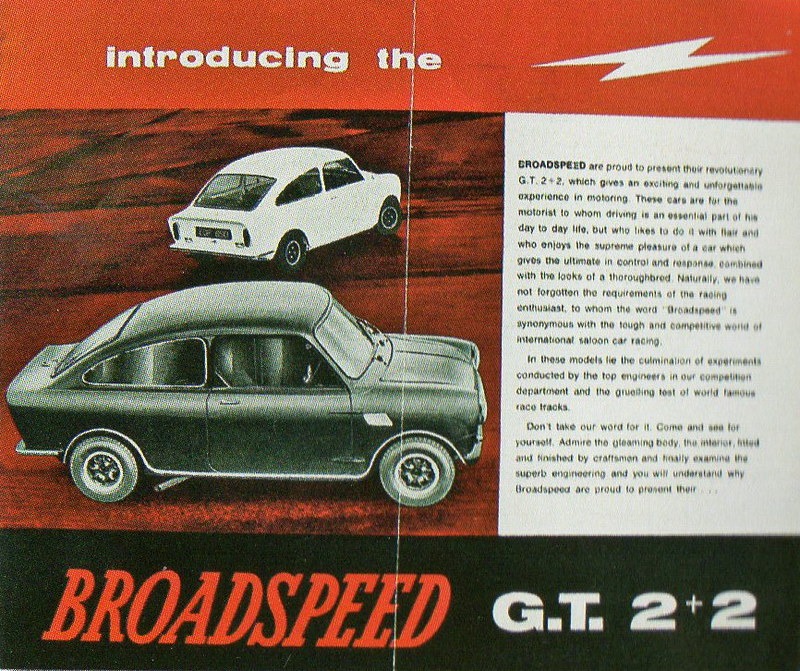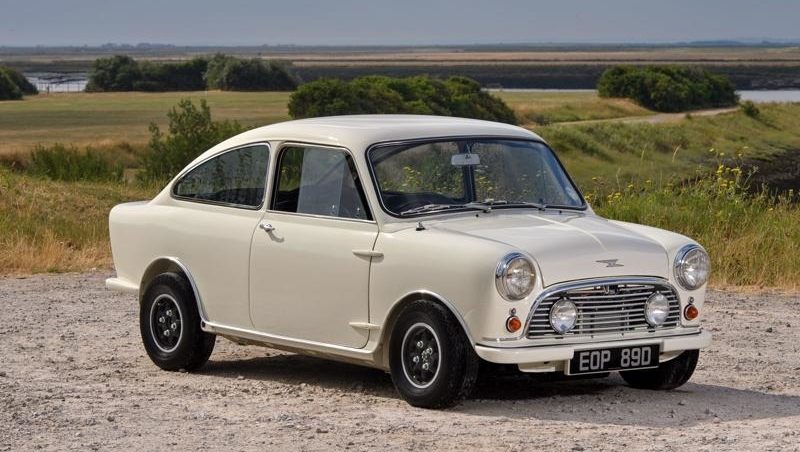In the early 1960s, Birmingham-based Broadspeed gained fame for its Mini racing team and established a strong reputation as a tuning company. In February 1966, Broadspeed’s leader Ralph Broad introduced a vehicle under his own brand: the Broadspeed GT 2+2. Cars and Car Conversions was the first to test it, noting, “This is more of an ultimate conversion than an entirely new car.”
The car’s design was crafted by Broadspeed’s sales manager, Tony Bloor. The modification involved removing the rear section of a standard Mini (not a Van), lowering the roofline by trimming the door pillars by about two inches, and attaching a fibreglass fastback along with body panels. The roof gutter was also removed. Finally, the engine was fine-tuned to Broadspeed specs, making it a challenging and costly process.
Broadspeed provided four variants, with the lightweight GTS being the top model. Prices varied by request, but a base GT 2+2 with a 998cc Cooper engine started at £905. The interior was significantly revamped, featuring a new dashboard, additional switches, lights, and auxiliary gauges. It included Restall bucket seats and a distinctive foldable rear seat, which allowed access to the luggage area since the boot lid was eliminated. The car extended about four inches longer than a standard Mini, sporting a Kamm-tail with a spoiler, a quick-release filler cap, and rear lights from a Singer Gazelle. Autocar likened it to “a downsized DB6 Aston Martin,” a comparison Ralph Broad likely appreciated.

Though a GTS racing version existed, the car primarily targeted the luxury market. A prototype displayed at the Olympia Motor Show was offered in a newspaper contest, but the winner chose cash instead. John Fitzpatrick and Tony Bloor raced the car briefly before it was sold to Tonio Hildebrand of the Netherlands, who continued racing it at Zandvoort. With a 1366cc Cooper engine it had a claimed top speed of 140mph, and an estimated price of about £2000.
In 1968 Broadspeed’s racing team switched from the Mini to the Ford Escort; BMC was not amused. Ralph Broad decided to stop production of the car when, in 1968, his premises in Birmingham were to be demolished for a new ring road. By that time, 28 GTs had been built, 16 of which were reputedly exported to Spain.


You must be logged in to post a comment Login